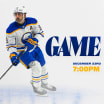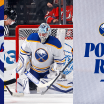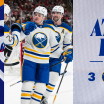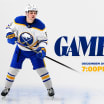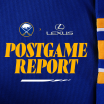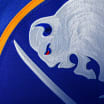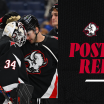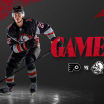Mike Ramsey saw his share of great goaltending during his days patrolling the blue line for the Buffalo Sabres. He was on the team when Don Edwards and Bob Sauve shared the Vezina Trophy in 1979-80 and when Tom Barrasso took the trophy as a rookie four years later.
Tales of the Dominator: Talking about practice
Former teammates explain Dominik Hasek's legendary practice habits
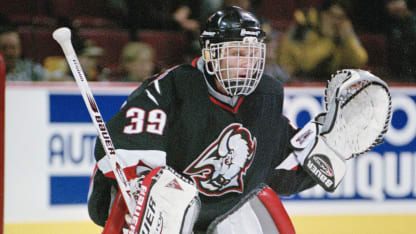
© Denis Brodeur/Getty Images
Sabres Memories: The Dominator
Tablet Talk: Dominik Hasek breaks down some big saves




